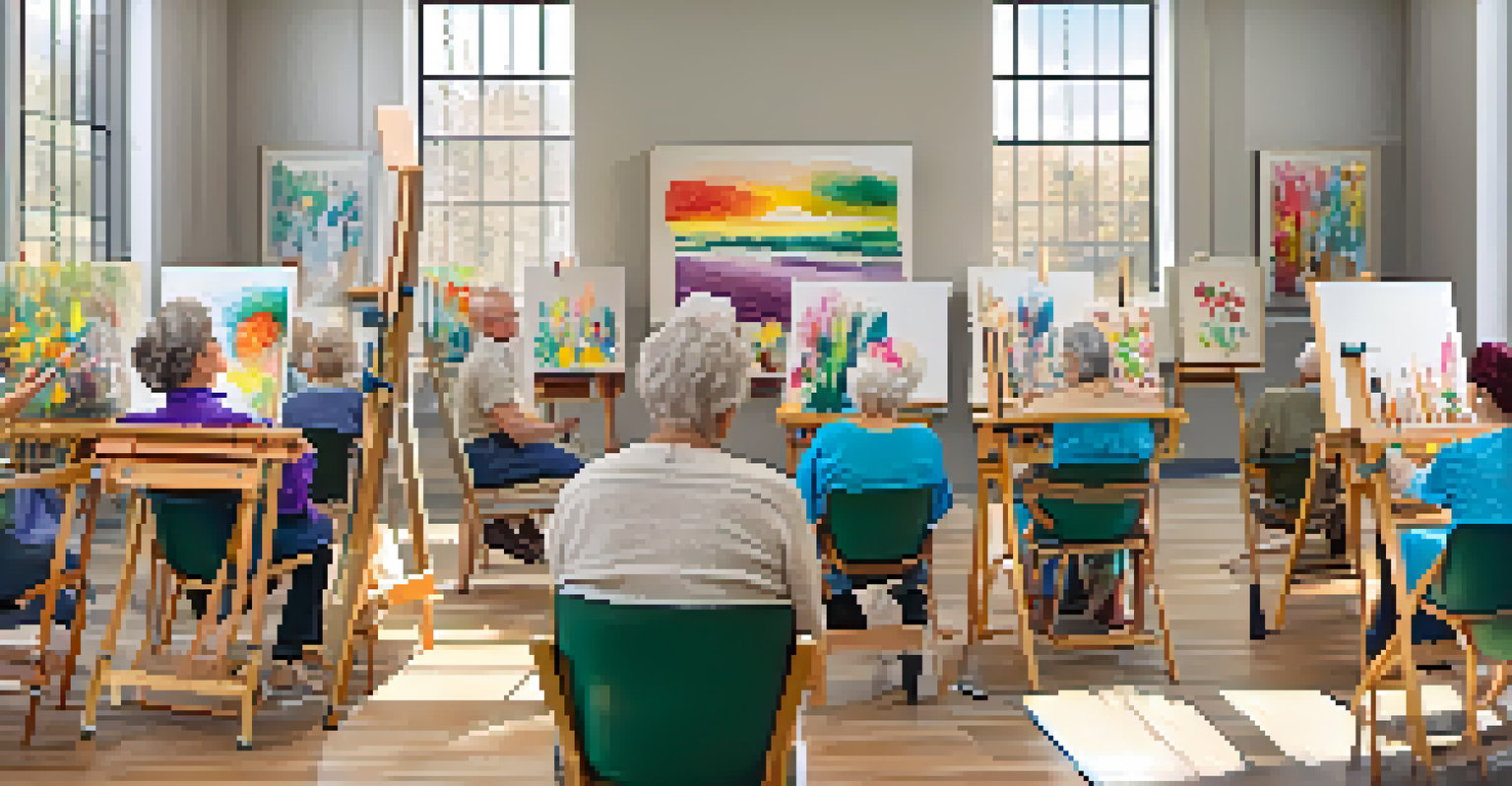Creating an Itinerary for Seniors: Activities and Rest

Understanding Seniors' Needs for Travel Itineraries
When planning a trip for seniors, it’s crucial to consider their unique needs. Many seniors may have mobility issues or health conditions that require special attention. Understanding these factors helps in crafting an itinerary that ensures both enjoyment and comfort.
Traveling with seniors requires a special touch, focusing on their comfort and enjoyment to create lasting memories.
Additionally, seniors often appreciate a slower pace. Unlike younger travelers who might thrive on back-to-back activities, seniors might prefer a balance of exploration and relaxation. This balance not only enhances their travel experience but also keeps them energized throughout their trip.
Lastly, communication is key. Discussing preferences and any potential concerns with your senior travel companions can lead to a more tailored itinerary. This way, you can accommodate their interests while ensuring they feel included and valued in the planning process.
Choosing the Right Destinations for Seniors
When selecting destinations, consider places that offer a mix of activities and accessibility. Parks, museums, and historical sites often provide both engagement and opportunities for rest. For instance, a scenic park can offer a leisurely stroll and a lovely spot to sit and relax.

Think about locations that have amenities designed for seniors, such as easy transportation and comfortable accommodations. Destinations with senior discounts or packages can also be particularly appealing, making travel more economical while providing added convenience.
Prioritize Seniors' Unique Needs
Understanding seniors' mobility and health concerns is essential for creating enjoyable and comfortable travel itineraries.
Lastly, consider cultural or family-oriented destinations. Locations that offer familiar food, cultural events, or family visits can create a more enriching experience for seniors, keeping them engaged and connected during their travels.
Planning Activities That Are Engaging Yet Relaxing
It's essential to strike a balance between engaging activities and relaxation. Consider incorporating gentle activities like guided nature walks, art workshops, or local cooking classes, which can be both stimulating and low-impact. These activities encourage interaction without overwhelming seniors.
The journey of a thousand miles begins with a single step, and for seniors, that step should be taken with care and consideration.
Incorporating time for relaxation is equally important. After a fun outing, plan for downtime where seniors can recharge. This might be a leisurely lunch at a café or a quiet afternoon at the hotel, allowing them to rest before the next adventure.
Remember that flexibility is vital. Being open to changing plans based on how seniors feel on a given day can lead to a more enjoyable experience. The goal is to create a stress-free environment where they can savor each moment at their own pace.
Incorporating Rest Time into the Itinerary
Rest time should be woven throughout the itinerary to prevent fatigue. Plan for breaks between activities, allowing seniors to unwind and refresh. This could mean scheduling a coffee break or a short nap after a morning of sightseeing.
Consider the length and intensity of activities carefully. Longer excursions should be balanced with lighter days to avoid burnout. For example, if one day involves a museum visit, the next could feature a leisurely picnic in a park.
Choose Accessible Destinations
Select destinations that offer a mix of engaging activities and accessibility to enhance the travel experience for seniors.
Finally, don’t forget about the importance of good sleep. Ensure that accommodations provide comfortable sleeping arrangements and consider travel times to avoid late-night arrivals. A well-rested traveler is a happy traveler!
Choosing Accommodations with Senior Comfort in Mind
When selecting accommodations, prioritize comfort and accessibility. Look for hotels or rentals that are senior-friendly, with features such as elevators, ramps, and spacious bathrooms. These details can make a significant difference in their overall experience.
Additionally, consider locations close to attractions or public transportation. This minimizes the need for lengthy travel, making outings more convenient and less strenuous. Being within walking distance of restaurants or points of interest can also enhance their enjoyment.
Comfortable beds and quiet environments are essential for a good night's sleep. Reading reviews or checking for senior-specific accommodations can help you choose the best possible place for your travel companions.
Packing Essentials for Senior Travelers
Packing for seniors requires a thoughtful approach. Encourage them to bring comfortable clothing and supportive shoes, which are crucial for their comfort during activities. Layers can also be helpful, as they allow for adjustments based on the weather.
Don't forget any necessary medications or medical supplies. A travel pill organizer can help them manage their medications easily while on the go. Additionally, packing a small first aid kit can provide peace of mind for minor mishaps.
Incorporate Rest and Flexibility
Planning for regular breaks and allowing flexibility in the itinerary can help prevent fatigue and ensure a stress-free experience.
Lastly, consider including entertainment options for downtime. Books, puzzles, or portable games can be excellent for keeping seniors engaged during rest periods or travel times between destinations.
Staying Connected and Safe While Traveling
Staying connected while traveling is vital for seniors. Encourage them to carry a fully charged mobile phone with emergency contacts easily accessible. Familiarizing them with basic functions can also help alleviate any tech-related anxiety.
Moreover, consider using apps or tools that help keep track of travel plans and itineraries. These can serve as handy references and simplify communication, especially if plans change unexpectedly.

Lastly, emphasize safety while exploring new areas. Discussing safety tips, such as staying in well-lit areas or keeping personal belongings secure, can empower seniors to enjoy their travels with confidence.